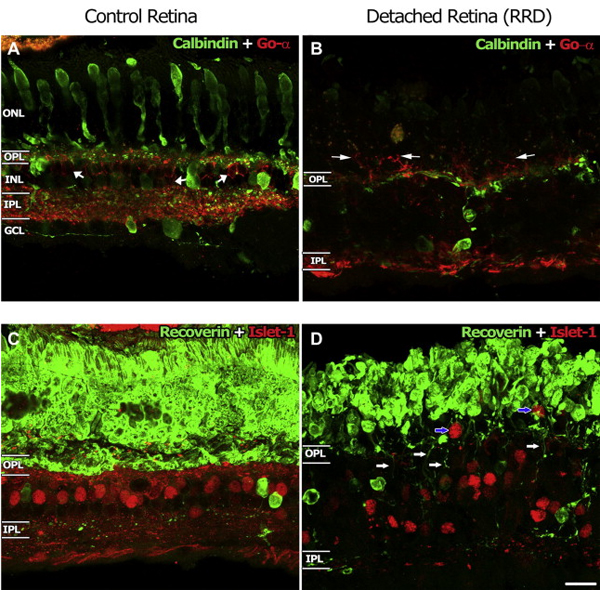This manuscript by Clairton F de Souza, Michael Kalloniatis, Philip J Polkinghorne, Charles N J McGhee and Monica L Acosta examined retinal remodeling in response to a form of retinal detachment. Rhegmatogenous retinal detachment. The authors describe the changes observed and note that retinal plasticity is acute and likely occurs quickly enough that it may explain persistent vision loss post-reattachment. They also later conclude that retinal detachment, particularly with macular involvement is an emergent condition which is a fundamentally important conclusion.
From their abstract: “Rhegmatogenous retinal detachment is by far the most common indication for retinal surgery and a major cause of severe vision loss. Increased levels of glutamate found in the vitreous of human patients and persistent remodeling, even after reattachment, suggest substantial neurochemical, functional and anatomical changes have occurred in the detached retina. Therefore, this study was designed to characterize the morphological changes and glutamate receptor functionality in human rhegmatogenous retinal detachment. A cation channel permeating probe, agmatine (1-amino-4-guanidobutane; AGB), was employed to track endogenous and kainate (KA) driven channel functionality combined with immunocytochemical characterization of cellular remodeling. In the detached retina increased AGB permeability was identified in the outer retina while there was a decrease in the inner retina in basal conditions. KA receptors exhibited increased AGB permeability in ON bipolar cells and decreased permeability in calbindin labeled inner retinal cells. All retinal detachment samples demonstrated ectopic synaptic protein expression, photoreceptor processes extending toward the inner retina, and other remodeling features of retinal degeneration. These anatomical changes have been demonstrated in animal studies and are novel features unreported in primary cases of human retinal detachment. We conclude that deafferentation in retinal detachment leads to alteration of the glutamatergic pathway.”
